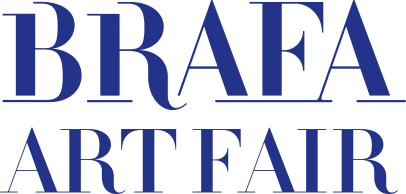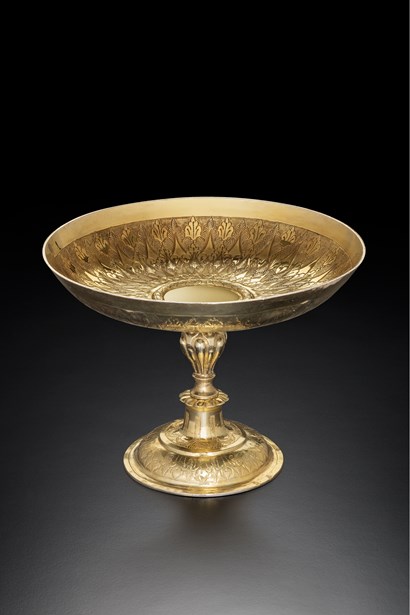This section will be available this Autumn.
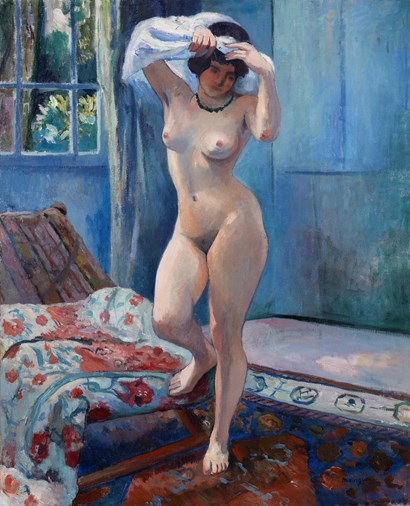
HELENE BAILLY MARCILHAC
Henri Manguin (Paris 1874-1949 Saint Tropez) La Chemise Enlevée, 1908 Oil on canvas 100 x 81 cm Signed lower right Provenance: acquired from the artist by Eugène Druet in 1911 (Galerie Druet); collection Kritchvesky; private collection, France; private collection, Brasil Exhibitions: Paris, Galerie E. Druet, Manguin, Paris 1913, n° 42; Paris, Galerie de Paris, Manguin, 1964, n° 3; Nice, Palais de la Méditerranée, Henri Manguin, plus de cent cinquante oeuvres, 1969, n° 32; Okayama, Hiroshima, Tokyo, Gustave Moreau et ses éleves, 1974; Paris, Galerie de Paris, Centenaire, Henri Manguin, 1976, n° 49 Literature: Pierre Cabanne, Henri Manguin, Neuchätel, 1964, ill. n° 117, p.64; Marie-Caroline Sainsaulieu, Lucille & Claude Manguin, Jean-Pierre Manguin, Pierre Cabanne, Jacques Lassaigne (preface); Henri Manguin: Catalogue Raisonné de l'oeuvre peint, Neuchâtel, Switzerland, Ides et Calendes, 1980, ill. n° 298
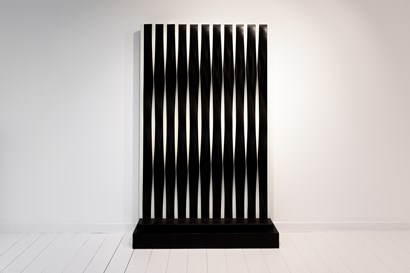
Edouard Simoens Gallery
walter leblanc
Walter Leblanc (Antwerp 1932-1986 Silly) Torsions, 1977-1978 Black and white enamelled steel sculpture 200 x 130 cm Provenance: Walter & Nicole Leblanc Foundation; private collection; André Simoens Collection Literature: Linea Catalogue raisonné, 1997, Ludion, Brussels, CR 1271, p. 282 Exhibitions: Brussels, Tecno, Walter Leblanc Integratie, 1983; Gent, Floraliapaleis, Linea ’83, 1983
_AristideMaillol_T638974992935545933.jpg?width=410&height=2000&qlt=90&scale=both&mode=max&format=jpeg)
Galerie Dina Vierny
aristide maillol
Aristide Maillol (Banyuls-sur-Mer, 1861-1944) Léda, 1901-02 Bronze H 28.3 cm Artist's monogram (on the back of the base) Ambroise Vollard edition from 1902 Foundry Florentin Godard, executed between 1907 and 1937 Provenance: private collection, New York; private collection, London: Galerie Dina Vierny, Paris (acquired from the above in 2025) Litrature: W. George, Les albums d'art Druet, vol. II, Maillol, Paris, 1927, another cast illustrated; J. Rewald, Maillol, Paris, 1939, p. 166 and another cast ill. pp. 110-111 (dated 'circa 1902'); W. George, Aristide Maillol, Berlin, 1965, pp. 137 & 232, another cast ill. p. 137; W. George, Maillol et l'âme de la sculpture, Neuchâtel, 1977, p. 128, another cast and terracotta version ill. pl. 139; B. Lorquin, Aristide Maillol, London, 1995, p. 52, another cast ill. p. 53

Victor Werner
thierry van ryswyck
Thierry Van Ryswyck (Antwerp 1911-1958 Vallauris, France) Walking panther, 1929 Patinated plaster H 53 x W 133.5 cm x D 23 cm Name and address of the mould maker inscribed on the underside of the base: A. Hoefnagels, mouleur, Quai Cockerill 19, Anvers Signed and dated Th. Van Ryswyck 1929 Provenance: private collection
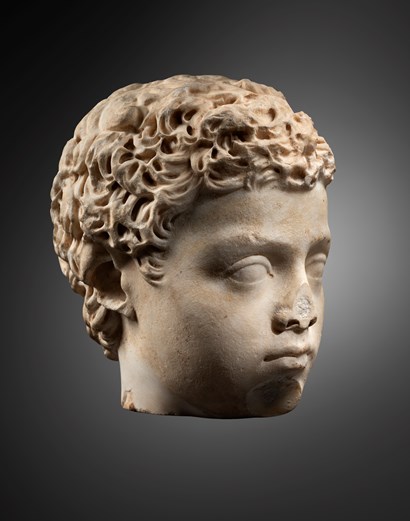
Grusenmeyer-Woliner
Portrait of a young boy Antonine Period, circa the end of the 2nd century Marble H 21 cm Provenance: Roger Peyrefitte (1907-2000) collection, Paris; sale of Roger Peyrefitte collection, Hôtel George V, Paris, 26 May 1977, lot n° 12; Art Market, 1978; Antiquities and Islamic Art, Sotheby’s, New York, 14 December 1993, lot n° 94; Dr. Anton Pestalozzi (1915-2007), Zurich, acquired from the previous owner; thence by descent Literature: Auction catalogue, Roger Peyrefitte Collection, Hôtel George V, Paris, May 26th, 1977, lot n° 12; Auction catalogue, Antiquities and Islamic Art, Sotheby’s, New York, December 14th, 1993, lot n° 94; I. Jucker, Skulpturen der Antiken-Sammlung Ennetwies, Mainz on the Rhine, 1995, Vol. 1, pp. 41-42, n° 24, pls. 49-50; K. Fittschen, Prinzenbildnisse Antoninischer Zeit, Mainz on the Rhine, 1999, p. 93, cat. n° 97
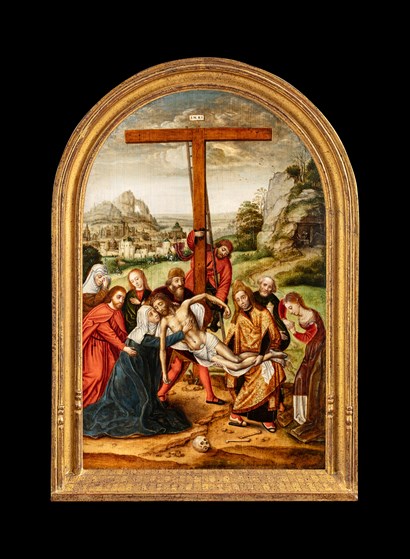
Franck Anelli Fine Art
Marcellus Coffermans (active in Antwerp, 1549-1578) Deposition of Christ, circa 1570 Oil on panel 32.7 x 21 cm Provenance: anonymous sale, Amsterdam, Christie's, 15 May 2002, lot 97 (as Marcellus Coffermans); private collection, Europe; from 2020, private collection, California Literature: M. Leeflang, Gemaakt in Antwerpen, bestemd voor Spanje? in Catharijne, Magazine van Museum Catharijneconvent Utrecht 2 (2010), repr. p. 11 Exhibition: Utrecht, Museum het Catherijneconvent, long-term loan, 2010-2020 Marcellus Coffermans deserves credit for bringing together a unique composition, the great deposition and the descent from the cross.

COLNAGHI
Attributed to the Menzies group Red-figure epichysis in terracotta with Hermaphroditos and a woman Greek, Apulian, circa 330-310 B.C. H 21 cm Provenance: Eugène Piot collection (1812-1890); his sale, 3 May 1870, lot n° 21; private collection, France; purchased from the above, 2022 Literature: F. Lenormand, Collection d’Antiquités Grecques recueillies dans la Grande-Grèce, l’Attique et l’Asie Mineure par M. Eug. P., Paris 1870, p. 16, n° 21 This epichysis is noteworthy for its provenance, as it was once part of the prestigious collection of Eugène Piot (1812–1890) - the French art critic, journalist, publisher, collector, and photographer - and it still bears his collection label. The present example also stands out for its above-average size and exceptional quality. It is in excellent condition and is typical of 4th-century BC Apulian Greek pottery. This vessel, characterized by its elegant neck surmounting a coiled body, was probably used to contain precious liquids intended for sparing use. Its delicate mouth seems ill-suited for serving wine, as has sometimes been suggested in the past, with some even describing such vases as “low-shaped oinochoai with flat bottoms.” Rather, they were most likely used for oil or perfume. The dropper-like mouth is flanked by two small, stylized masks in relief. The wide, disc-like shoulder of the vase has been decorated with particular attention to detail and form. The border is adorned with a frieze of eggs. A hermaphroditic Eros kneels and presents a mirror to a seated young woman, who also holds a mirror and a crown. On the reverse, an elegant arrangement of palmettes unfolds from the base of the handle and frames the central scene. The concave sides of the body are decorated with a vegetal frieze, overpainted in white and incised. Comparable examples are held at the Getty Museum in Malibu and the Musée Saint-Raymond in Toulouse; both have been attributed to the Menzies Group, active during the third quarter of the 4th century BC.
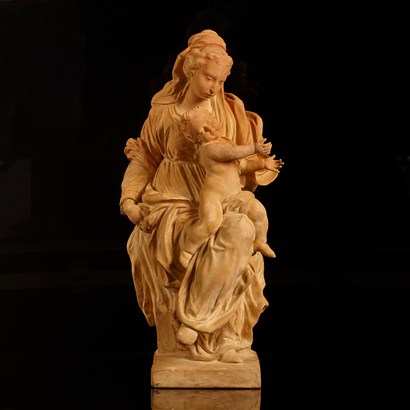
Floris van Wanroij Fine Art
rombout ‘pauli’ pauwels
Rombout ‘Pauli’ Pauwels (Mechelen circa 1625-1692 Ghent) The Virgin and Child Terracotta, sculpted on full round (contains restorations) H 52.5 x W 24 x D 23.5 cm Provenance: the Hulshoff Pol collection, Wassenaar, The Netherlands Literature: Neeffs, E. (1879), Histoire de la peinture et de la sculpture à Malines, Ghent, Vol. II, pp. 193-200; Nieuwdorp, H. (1977), De beeldhouwkunst in de eeuw van Rubens in de Zuidelijke Nederlanden en het prinsbisdom Luik, Brussels: KMKG, pp. 325-327 nrs. 294-298, p. 140, n° 103; Jacobs, A. & Vézilier, S. (2011), Fascination baroque: la sculpture baroque flamande dans les collections publiques françaises, Paris, pp. 116-121

Thomas Deprez Fine Arts
jean delville
Jean Delville (Leuven 1867-1953 Brussels) Aveugle, 1888 Oil on canvas 65 x 81 cm Signed and dated l.l.: 'Jean Delville / 1888' Relined, with a fair amount of retouching Provenance: private collection, Brussels, since three generations. Exhibitions: Salon de Gand, XXXIVe Exposition Triennale, Ghent, 1889, cat. n° 166, as: 'Aveugle'; L'Essor, XIIIe exposition annuelle, Brussels, 1889, cat. n° 4, as: 'Aveugle' PRESS F.N., 'Chronique Artistique', dans: Journal de Bruxelles, 24/03/1889, p. 5 (Supplément au Journal de Bruxelles du 24 mars 1889): 'L'Aveugle, la femme si visiblement plongée en des pensées lourdes et étroites, qui se chauffe [...]'
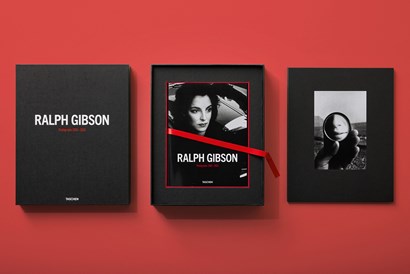
TASCHEN
ralph gibson
Ralph Gibson (Los Angeles, 1939) Ralph Gibson. Photographs 1960-2024 The most comprehensive collection of this highly acclaimed and prolific American photographer's work offers the fruit of more than six decades of image-making. Available in two limited art editions of 100 copies, each accompanied by a gelatin silver print numbered and signed by Gibson.

Willow Gallery
Bernard Buffet (Paris 1928-1999 Tourtour) Chevalier d'Henri III, 1998 Oil on canvas 130 x 89 cm Signed and dated This painting is sold with a photo-certificate of authenticity from the Galerie Maurice Garnier, Paris Provenance: Galerie Maurice Garnier, Paris; private collection, Germany (acquired from the above 2000); sale, Christie's London, 21 June 2012; private collection, Hong Kong Literature: Y. Le Pichon & M. Garnier, Bernard Buffet, 1982-1999, vol. III, 2007, Switzerland, n° 1261 (ill. p. 552)

Galerie Nicolas Bourriaud
emile gilioli
Emile Gilioli (Paris, 1911-1977) Obélisque, circa 1960 Marble sculpture H 88 x W 25.5 x D 24 cm Signed 'Gilioli' Unique piece Provenance: the artist's studio Literature: Pierre Descarges, La logique de Gilioli, XXe siècle, Juin 1970, n° 34, p. 70; Ionel Jianou, Hélène Lasalle, Gilioli, Paris, 1971
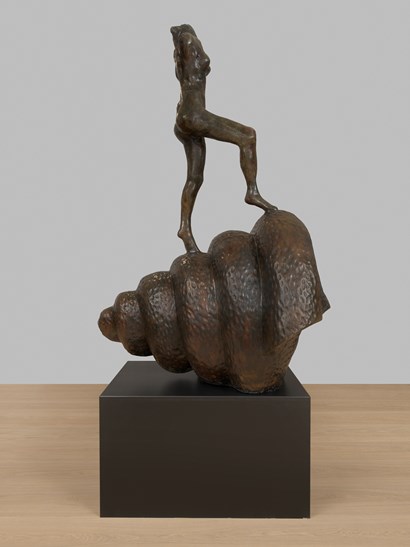
CKS Gallery
Salvador Dalí (Spain, Figueras 1904-1989) Nude ascending the staircase, 1973 Brown patina bronze sculpture H 212 × W 139 × D 117 cm - Height with the base: 297 cm Signed & numbered 'Dalí 2/8', Foundry mark 'Fratelli Bonvicini, Italie' on the shell Certificate of authenticity by M. Robert Descharnes and listed in the Descharnes Archives under the n° 0-264 Provenance: private collection

Grusenmeyer-Woliner
flute stopper Wunear Biwat (Mundugumor), Yuat River, late 19th - early 20th century Papua New Guinea Wood, feathers, shell H. 64 cm ( 85 cm including the base) Provenance: Charles Ratton; Kamer Gallery, acquired in 1966 by Emiel Veranneman; Emiel Veranneman; Thence by descent Literature: Rotary Club Sint-Niklaas, Oude Kunst uit Afrika en Oceanie, Exhibition catalogue, Sint-Niklaas, May 5-20, 1979, n° 31; Veranneman Emiel, Visie & Passie, 2002, pp. 72-73 Exhibition: Oude Kunst uit Afrika en Oceanië, Ex-Libriscentrum, Sint-Niklaas, 5–20 May 1979, Rotary Club Sint-Niklaas
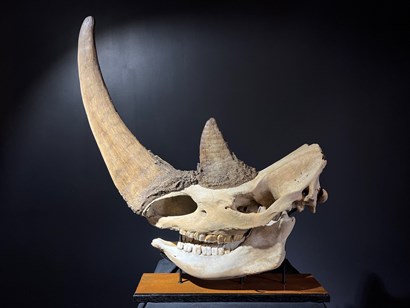
Stone Gallery
Woolly rhinoceros skull Approx. 50.000 years old 100 x 100 x 35 cm Origin: Siberia This woolly rhinoceros skull is approximately 50,000 years old, belonging to one of the most impressive mammals in the recent history of Northern Europe and Northern Asia. There were even people who lived alongside these giants between around 30,000 and 15,000 years ago! Stone gallery has previously conducted expeditions in various countries but recently acquired this skull through a swap with a local museum. Roy says, 'It is the best-preserved and most complete skull I’ve ever seen. Even the teeth are all original.' Researchers and students from Maastricht University have digitised mammoth and rhinoceros fossils from the Ice Age, including this skull. With this technique, it’s possible to bring these extinct species back to life in motion and conduct new studies. 'We’re investigating how strong the bone structure is. For this, we use Finite Element Analyses, a method commonly applied in the construction of buildings and bridges. The study explores the forces exerted on the bones, such as during chewing. This helps us predict how and what the animal ate, as well as how well it was adapted to its enormous size.' - Paleontologist Dr. Jesse Hennekam, Assistant Professor, Maastricht University -
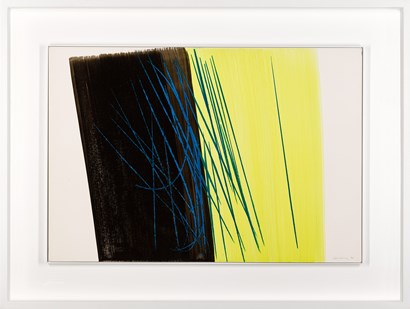
Samuel Vanhoegaerden Gallery
Hans Hartung (Leipzig 1904-1989 Antibes) P1971-20, 1971 Crayon and acrylic on baryta board 50 x 73 cm Signed and dated lower right This work is registered in The Hans Hartung and Anna-Eva Bergman Foundation archive with number P1971-20 and will be included in the forthcoming catalogue raisonné of Hans Hartung Provenance: Galerie Ludorff, Germany; Sotheby's London, July 2020; private Collection, Brussels; acquired from the above by the present owner

Galerie la Ménagerie
edouard-marcel sandoz
Edouard-Marcel Sandoz (Basel 1881-1971 Lausanne) Duckling, circa 1925 Brown-green patinated bronze Bears the inscription of the foundry Susse Frères Paris H 9.5 x W 9 x D 6 cm Signed 'Ed M Sandoz' on the base Literature: Model with the reference 862 from the catalogue raisonné of the artist, Félix Marcilhac, Sandoz, sculpteur figuriste et animalier, Les éditions de l'amateur, 1993

Vagabond Antiques
Pair of carved Heraldic stone lions Central European, Hapsburg Territories, late 17th century Carved limestone H 90 x W 57 x D 77 cm A striking pair of limestone lions, carved in full relief and designed as true opposites. Each is seated upright, with bared teeth, strong haunches and tightly curled manes. Both wear a crown and hold an oval cartouche carved in bold relief with an interlaced monogram. They were made to flank the formal entrance of a major estate. The form and detailing are typical of high-status Baroque culture in Central Europe and the crown design is especially telling. Each features a repeating pattern of fleur-de-lis and crosses, closely following the design of imperial crowns used in Habsburg heraldry - particularly in the realms of Austria and Bohemia. A crucial distinction is the placement of such a crown directly on the animal - not merely above the cipher - which indicates an emblem of royal standing. Comparable examples can be seen on the monumental lions at Prince Eugene of Savoy's Upper Belvedere Palace in Vienna and others across Bavaria and Austria, where lions were used as heraldic supporters for noble or imperial arms. The monograms are hard to decipher but are almost certainly ciphers for the original owners or patrons. They likely stood at the gates of a major estate or seat of power under Habsburg rule or allegiance, marking out territories and status.

Galerie Boulakia
Joan Miró (Barcelona 1893-1983 Palma) Des figures devant la lune, 1942 Pastel, gouache, wash, brush, ink, and pencil on paper 64.5 x 48.5 cm Signed 'Joan Miró' (lower right) Dated 'X Barcelone, 18-12-1942' and titled on reverse Certificate of authenticity from ADOM dated 13 July 2018 Provenance: Pierre Matisse Gallery, New York; Galleria Narciso, Turin Exhibitions: Traveling exhibition Japan, 1984, reproduced cat. n° 17; Ferrara, Palais des Diamants, Joan Miró, 1985, n° 81; Cherasco, Palazzo Salmatoris, Chagall, Miró, Magritte : La Poesia del Sogno, September-December 2005; Paris, Exhibition Jean Louis Prat-Galerie Lelong, Grand Palais, September-October 2018; Mons, Musée des Beaux-Arts de Mons, Belgium, Exposition Joan Miro : L’essence des choses passées et présentes, October 2022-January 2023, repr. in cat. Literature: Jacques Dupin, Ariane Lelong-Mainaud, Joan Miro : catalogue raisonné, Volume II, 1931-1941, Editions Maeght-Lelong, Paris, 2000; Joan Miró exhibition catalogue, L'essence des choses passées et présentes, Editions BAM, Musée des Beaux-Arts de Mons, Belgium, 2022
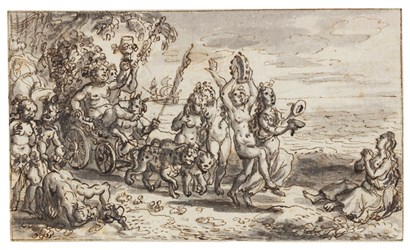
Galerie Lowet de Wotrenge
david vinckboons (mechelen 1576 - 1629 amsterdam)
David Vinckboons (Mechelen 1576-1629 Amsterdam) The Triumph of Bacchus Pen and brown ink and grey wash over black chalk, within brown ink framing lines on laid paper 68 x 114 mm Provenance: Dr. Einar Perman (1893-1976), Stockholm; by descent to the previous owners; sale, New York, Sotheby's, 31 January 2024, lot 104 Literature: Laren, Singer Museum, Oude Tekeningen uit de Nederlanden. Verzameling Prof. E. Perman, Stockholm, 1962, cat. n° 121 (as Adriaen van de Venne)

Galeria Bessa Pereira
Abraham Palatnik (Brasil, Natal 1928-2020 Rio de Janeiro) Cupboard, 1950s Iron, wood and painted glass H 90 x W 150 x D 49 cm Origin: Brasil Provenance: private collection, Rio de Janeiro; Galeria Bessa Pereira collection Literature: Vicente, A., & Vasconcellos, M. (Comps.), Móvel moderno brasileiro (1st edition), São Paulo: Olhares, 2017, pp. 244-245; Vasconcellos, M., Móvel brasileiro moderno (1st edition), Rio de Janeiro: Aeroplano, 2012, p. 193

